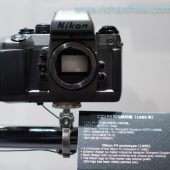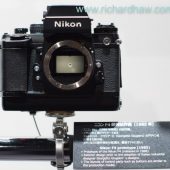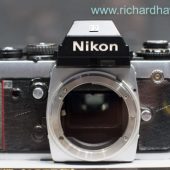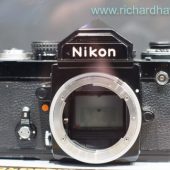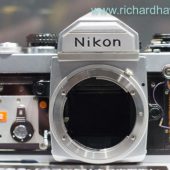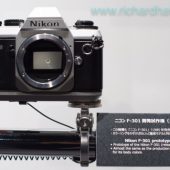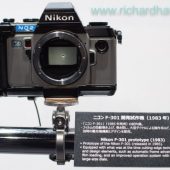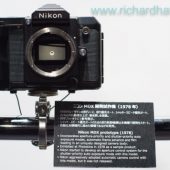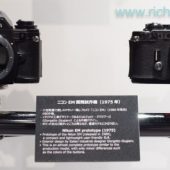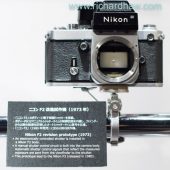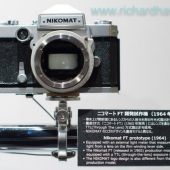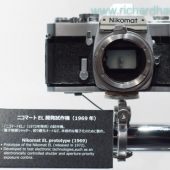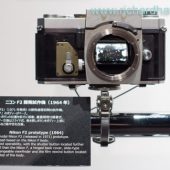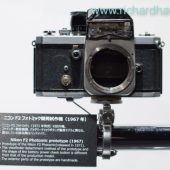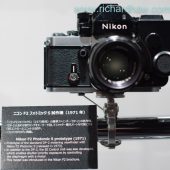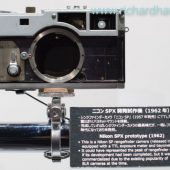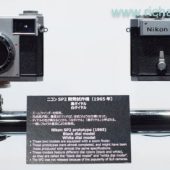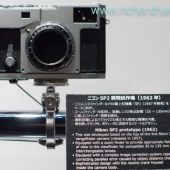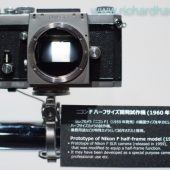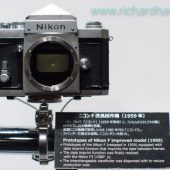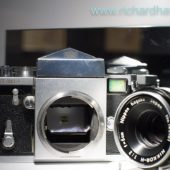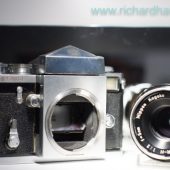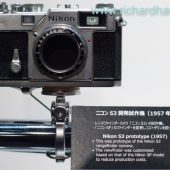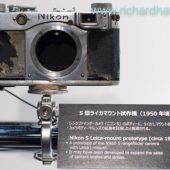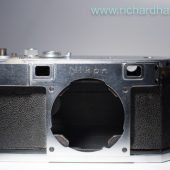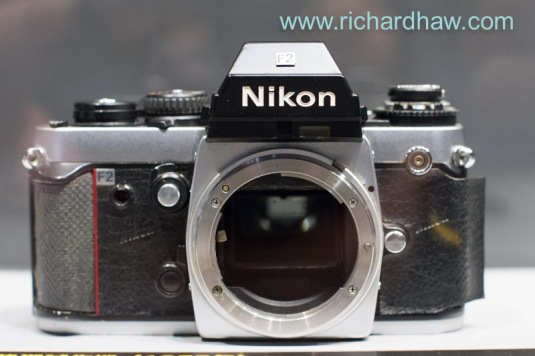This is an update to my previous post regarding the exhibition of Nikon prototype cameras held at the Nikon Museum in Tokyo for the 100th anniversary of the company: Richard Haw posted a detailed report from the exhibition on this website – for more pictures and additional coverage, please visit the original post here:
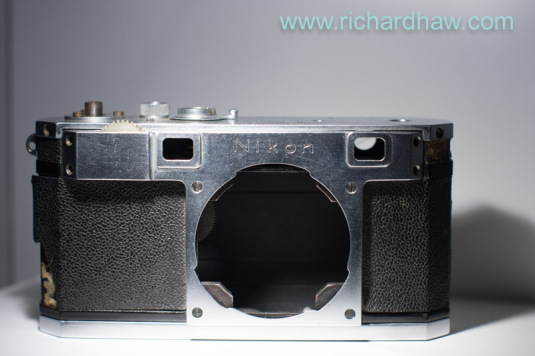
The journey starts with this prototype of the Nikon I. It is basically a copy of the popular Contax rangefinder camera that has been out for more than a decade before this camera was conceived. It merged the innovative Contax body and the reliable cloth shutter of the Leica rangefinder cameras. Notice that it has a shorter rangefinder base, a small decision that made a big impact when shooting with the camera as your finger will not cover the rangefinder window by accident. You trade-in accuracy for usability and for most cases, this small detail change meant the difference between getting the shot or missing it. Also notice that the lens mount and internal mechanism is missing.
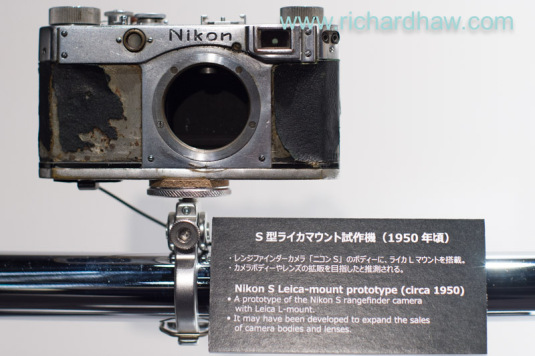
Now, this would have been an interesting camera if it was mass produced. I have an L39 fit Nikkor lens here and this made me wish that this went into production
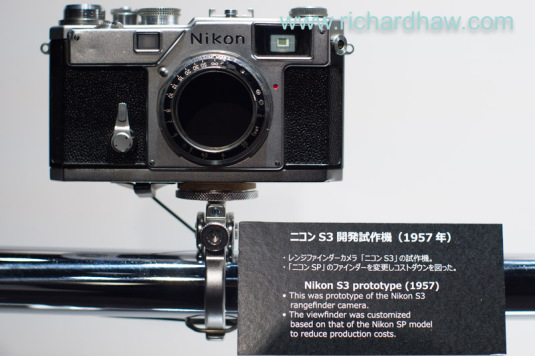
The Nikon S3 is supposed to be the cheaper alternative to the Nikon SP. The Nikon SP was the most advanced rangefinder camera in it’s day because of the awesome viewfinder. It was expensive and complicated to manufacture as a result so the Nikon S3 was made to deal with this problem. Notice that the prototype had a different viewfinder from the full production model of the Nikon S3.
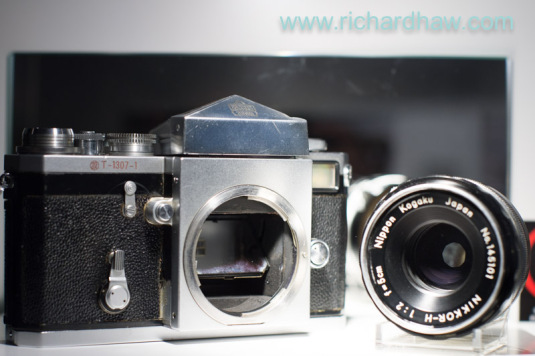
The next camera is the prototype for the Nikon F, the legendary camera that would make Nikon the dominant camera company. The legendary Nikon F is the sole camera that was responsible for making the SLR camera the dominant camera format in the coming years up until the present when the mirrorless cameras came to challenge the status quo.
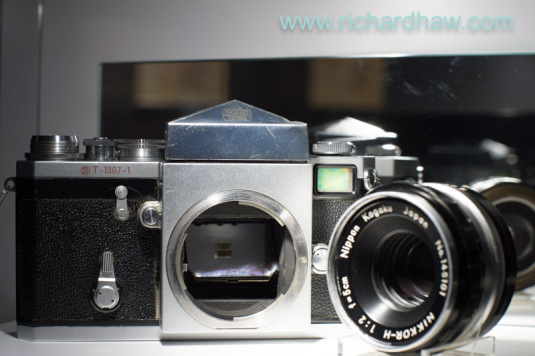
Notice that the prototype had a contour finder built-in to the body. This clever idea was dropped during production because simplicity means reliability (and also higher profits). Also notice that the lens mount is totally different, we are so used to seeing the Nikon F with the venerable F-mount (Fuketa mount). Check out the prototype lens, too!
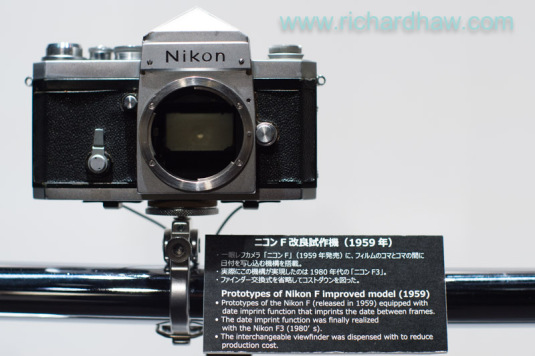
This late prototype is looking very much like the production model of the Nikon F. Notice that the silhouette has been greatly refined and simplified. The engineers were inspired by Bauhaus philosophy and 3 simple shapes were combined to form the silhouette of the camera – square, triangle and circle. This combination will stay for the decades to come as the de facto silhouette of the SLR.
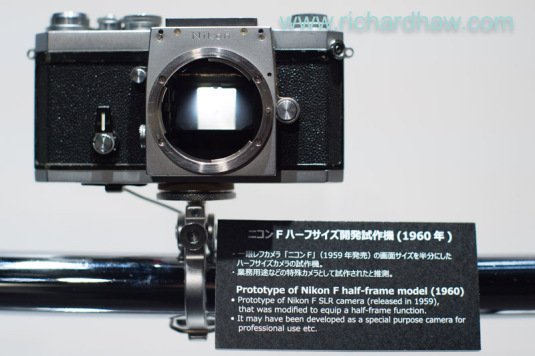
Nikon also developed a half-frame version of the Nikon F. This format was practical for a number of purposes, mainly for portability (the Olympus Pen F), sports, policing and the military. Just imagine using a motor drive with this thing!
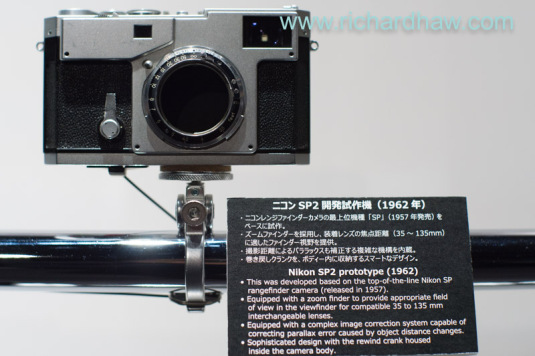
Now, this is what I call innovation! I am interested to see how that rewind mechanism is fitted to this prototype but I am not allowed to step beyond the line. It also has a complex parallax-correction system. This is probably why it didn’t saw production.
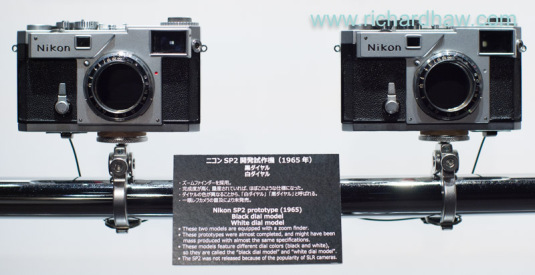
These would have been amazing if they were sold. Imagine, having a zoom finder in one of your rangefinder cameras! This would have been very useful for telephoto lenses like the 13.5cm line of lenses. It is also greats because your viewfinder not cluttered with all those frame lines unlike that of the Nikon SP. This is the closest that we can get to having a real Nikon SP2.
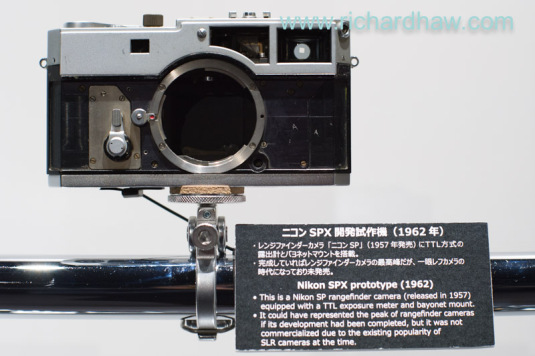
If this camera went into production, this would have given Leica another black-eye or it would have driven it out of business! That TTL metering gimmick is 9 years ahead of it’s time because the Leica M5 is the first Leica camera with TTL metering and it came out in 1971. It is also interesting that it came with a bayonet mount.

I love Nikkormats (Nikomat here in Japan) because they are a joy to shoot with due to the of the exposure meter window found on top of the camera. I can now check my exposure without the need to peek into the viewfinder. Notice that the light meter was installed on the exterior on this prototype. It may have been used as a “proof of concept” for the body and the complicated shutter dial mechanism on the base of the mount. I hate fixing the Nikkormat FT cameras because of the complicated shutter selection mechanism and the overly-complicated viewfinder. A big price to pay for the joy of using and owning one for cheap since I got all of my Nikkormats as junk cameras.
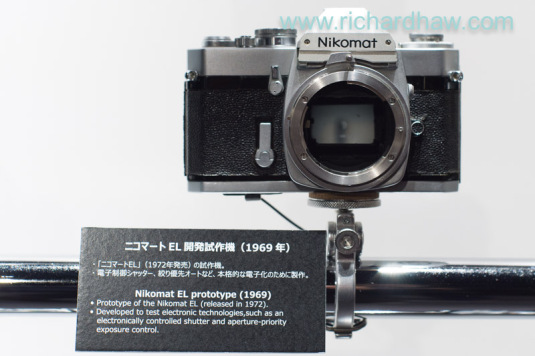
Here is the prototype of one of my favourite cameras, the Nikkormat EL. The prototype is very similar to the production model.
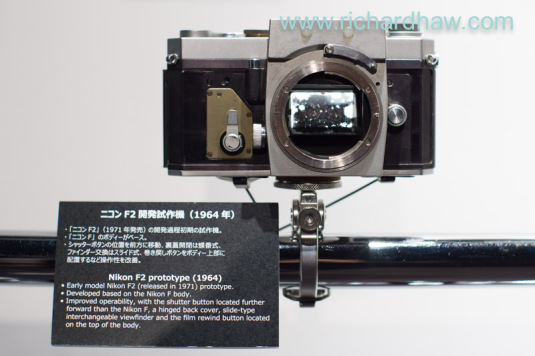
The Nikon F was a best-seller for the company so it made no sense to disconnect from the design too much. The Nikon F2 is just an evolution of the Nikon F but the changes made to the design were significant; it modernised the Nikon F design.
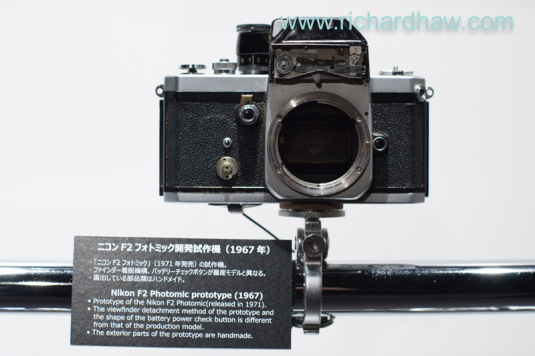
Here is another prototype of the Nikon F2, this time with a photomic head. This one looks a lot like the production model except for a few details written on the card.

An interesting prototype of the EE (Electronic Eye) system for the Nikon F2. This may be just a dummy for all we know. The production variant is just as bulky.
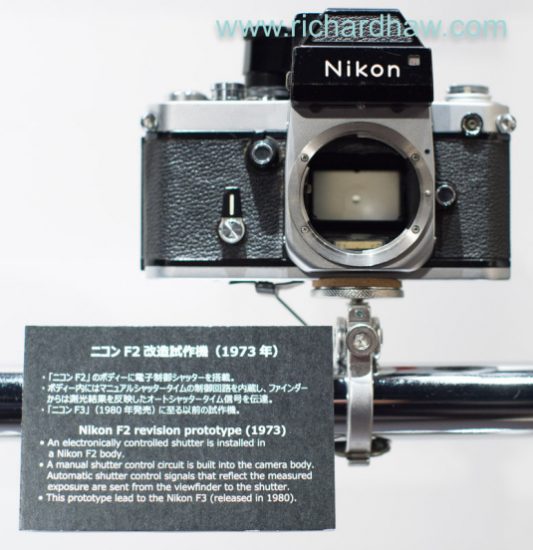
A very interesting and significant prototype! This is a true glimpse to the future and what is going to be considered Nikon’s future tech at the time, the legendary Nikon F3!

These prototypes are almost identical to the production cameras. I suspect that these two cameras were made to test the materials that they will eventually use and for finalising any problems with the electronics inside. The Nikon EM uses a polycarbonate body like that of the Canon AE-1. If Canon can get away with using plastic, surely Nikon can,too!
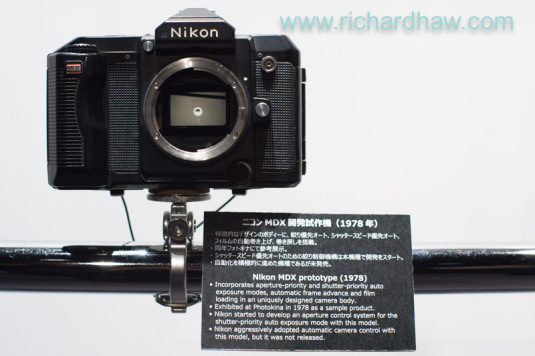
The Nikon MDX. This camera is a testbed for the cameras that would in later during the ’80s like the F-301 and F-501 series of cameras. It resembled nothing in Nikon’s lineup so I would consider this to be a very important prototype.

This prototype Nikon F-301 resembles the production model save for a few minor details like the height of the top-left panel. Notice that the grip is different as well as the position of the tripod socket.

Now, here is a late prototype for the Nikon F-301. Again, this is probably made to test out the materials that Nikon is going to eventually use for production.
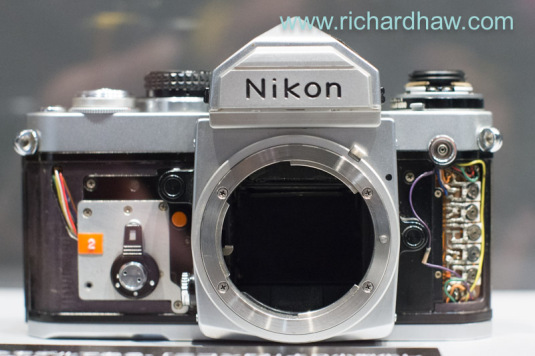
Here is an early prototype of the Nikon F3. Notice that the shape and format is different from the production model. It actually reminds me of the original Nikon FM camera. You can also see some electronic bits hanging outside the camera. Amazing how the general foundation for the Nikon F3 was already laid out this early.
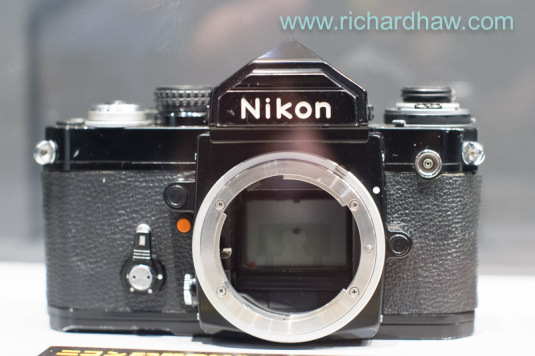
Another prototype but this time the electronic bits were not exposed anymore.
Here is the Nikon F3 after it received a facelift from Giorgetto Giugiaro. Giugiaro added a red stripe to the Nikon F3 because he designed Ferrari supercars. It gave the Nikon F3 a little bit of sex appeal and all Nikon cameras ever since inherited this red accent. Notice the “F2” labels on the prototype, these were stuck there as some sort of gag by one of the engineers. The Nikon F3 is also the first Nikon SLR to have a grip of some sort. Nikon did the right thing by having Giugiaro design it’s cameras, this was something that was never done before in the camera industry. This is one of the reasons why the Nikon F3 felt good in my hands and is so intuitive to use. I love the Nikon F3, it is a masterpiece!
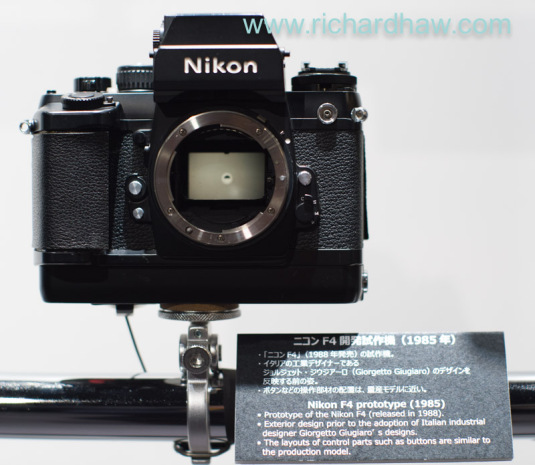
Just look at this beauty! I love how angular it looks, very masculine! The Nikon F4 would serve as the template from which successive Nikon film SLRs will be base on and many of it’s influences carry on to the present. This is a very important camera, a real classic.
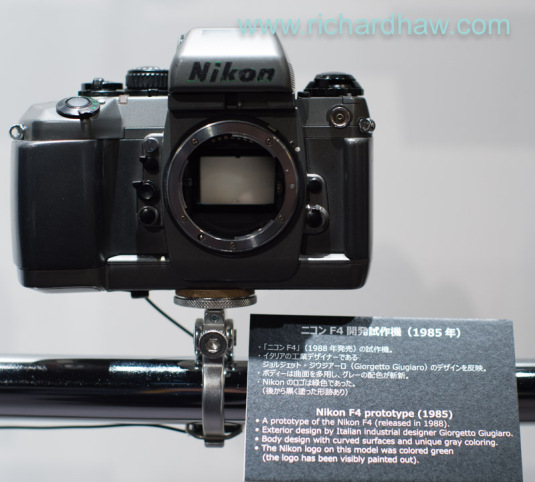
After being redesigned by Giugiaro, this prototype now resembles the Nikon F4 everyone is familiar with. Notice that it is missing the engraved name an some minor details that are present in the production model.
